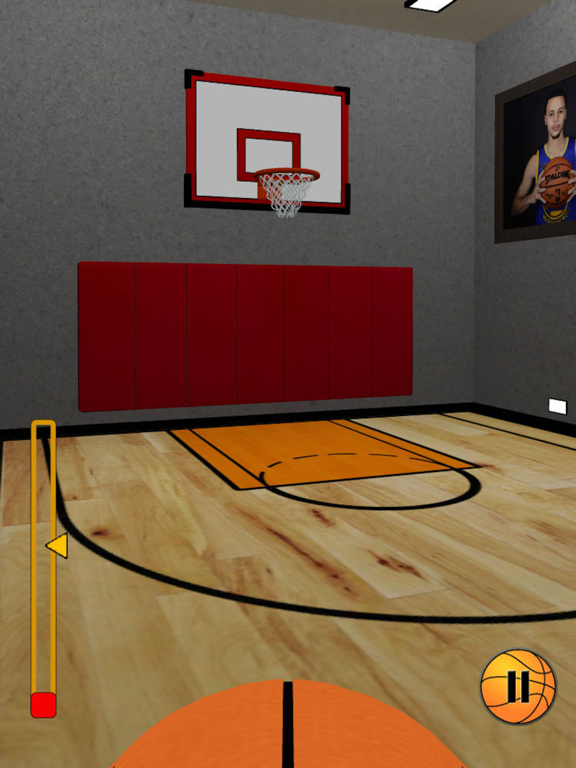Home »
Misc »
How do they change basketball floors
How do they change basketball floors
How They Do It: Pulling Off Today’s Bold Basketball Floors
Larger-than-life metallic Spartans on the new San Jose State University basketball floor created an out-of-the-box challenge for United Floor Services Inc. (Courtesy San Jose State University)
Not long ago, gym floor specialists were known mainly for their ability to travel long distances to a job, use their riding sanders to sand vast expanses of maple, paint their lines and walk miles back and forth to get finish on the floor. It wasn't a niche involving much creativity or imagination, and, except for painting the lines, it didn't require much finesse, either.
Times have changed. While coating gyms still involves a lot of walking, what happens before that final coat could hardly be called boring. Today's basketball courts are in-your-face, with huge logos and other wild graphics that are all about branding. Many people date this trend to the University of Oregon floor that debuted in 2010 (more on that in the sidebar "Into the Woods" below), with its forest of tall fir trees that broke the mold of traditional floors and even led to rule changes in the NCAA.![]()
The effects have been far-reaching. While many NBA floors remain tame in comparison, NCAA floors seem to compete to outdo each other, and high schools and even junior highs and grade schools are catching on to the trend. How do wood floor pros execute the crazy designs? HF talked to some gym floor specialists to find out.
United Services Inc.
United Services Inc. in Idaho Falls, Idaho, has a long history of doing basketball floors, but they really put themselves on the map when they created the University of Oregon floor in 2010 (see the "Into the Woods" at the end of this article). They've done many tricky designs since then, but the most elaborate one was this San Jose State University Spartans floor.
The new floor design originated with the coach, who had previously been at Boise State, known for its bold branding, including its "Smurf Turf" blue football field and its basketball floor with huge bronco heads inside the three-point lines. The coach wanted the same kind of branding for his court at San Jose State.
"They said, 'We want these Spartans faux-painted on the floor,'" United Services' General Manager Shane Matheson says. "We had to figure out what that was! On top of that they picked these metallic paints—golds, coppers, silvers—that are impossible for anything to stick to."
Once they had an image of the Spartans they liked, it was created in Adobe Illustrator. To convince the client they could actually create the design on a floor, United created an 8-foot sample. With that proof in hand and client approval, the outlines of the design were transferred to the plotter to create stencils—many, many stencils. The stencils are carefully adhered to the gym floor and have layers, so when one paint area is dry, a section can be removed and another area painted. This process can go on repeatedly depending on the complexity of the graphic.
'Countless layers' of paint and transfer paper, along with three artists, were necessary to complete the Spartans graphics on the San Jose State University basketball floor.
The main Spartan graphic is 27 feet tall and 48 feet wide. The first stencil created the general outline of the Spartans for the base color. At that point three artists went to work on the graphic at the same time, using stencils along with faux painting techniques. "We put the base paint layers down, pull the vinyl up, then take transfer paper—what they use on top of vinyl—and put that on top of it and cut it," Matheson explains. "It was countless layers of paint and transfer paper and cutting by hand."
The client wanted the graphic to be perfect, and the artists on the floor, including United's Project Supervisor Nathan Banks, were perfectionists, too. When the desired effects—texture of the skin, cracks in the old pounded brass armor—in some small sections didn't look right, they sanded it off and started all over again.
Because the paints were metallic, they presented particular challenges. In addition to the fact that Matheson found "not only does it look like gold, it costs like gold," due to its composition, the appearance of the paint would change depending on direction of the brush strokes. So, the crew had to airbrush the metallic paints. Sometimes one of the artists would stand on a 16-foot ladder to direct the others during airbrushing so they could be sure to get the correct overall effect. They employed stippling techniques—using small dots—and also sprayed on highlights and shadows to make the floor pop.
So, the crew had to airbrush the metallic paints. Sometimes one of the artists would stand on a 16-foot ladder to direct the others during airbrushing so they could be sure to get the correct overall effect. They employed stippling techniques—using small dots—and also sprayed on highlights and shadows to make the floor pop.
Adhesion was always on their minds, Matheson says, adding that they knew the college would be taping a volleyball court over the Spartans graphic on a regular basis, so the crew was religious about making sure each paint and finish layer would be correctly bonded.
{rblink 2331}One of the biggest challenges was hand-abrading the entire graphic, Matheson says. ("I've seen guys spend hours hand-painting a logo and then run a buffer over it and ruin it," he says.) Then a sealer with "very good adhesion characteristics" was used to coat the graphic before the buffers abraded the rest of the floor.
"If you get close to them the details are incredible. You can see sweat, patina, cracks in the armor. When we were done they said, 'That is so much better than our expectations,'" Matheson says.
When we were done they said, 'That is so much better than our expectations,'" Matheson says.
By comparison, the rest of the floor was easy. The large logo was painted—a routine process for them—and inside the three-point lines, the maple floor was stained. Although Matheson says the first time they ever stained a maple floor it turned out "nasty," by now they have their process—involving not sanding to too high of a grit, conditioning and water-popping the floor correctly—down to a science.
The university ships the court back to United every year to touch up and recoat, not risking damage to the floor that cost at least $250,000.
Pulling off a floor like this takes decades of accumulated experience, Matheson says. "It's a team effort to do it—all the way from the selling of it, to the design of it, to the execution and maintenance of it. It just takes a lot of people to do this, and everything has to fall in line."
Worst Mistake: "When the Seattle SuperSonics moved to be the Oklahoma City Thunder, it was an elaborate floor. We shipped it out, and three days before the game, they put it down. Two days before the game they were certifying the floor and they called us and said the three-point line was 1 foot off. It was a brand-new arena, brand-new franchise. We were out there all night palm-sanding the three-point line off the floor. The finish dried hours before the game." We shipped it out, and three days before the game, they put it down. Two days before the game they were certifying the floor and they called us and said the three-point line was 1 foot off. It was a brand-new arena, brand-new franchise. We were out there all night palm-sanding the three-point line off the floor. The finish dried hours before the game." |
Tips: • Be sure images clients want reproduced aren't copyrighted. • Allow enough time for the whole project. • Give paint extra cure time. • Paint layers should be thin. |
| Eric Maxwell/AECOM Into the Woods When people think of current trends in out-of-the-box basketball floor designs, many immediately think of the University of Oregon floor unveiled in 2010, which features a forest of fir trees surrounding center court.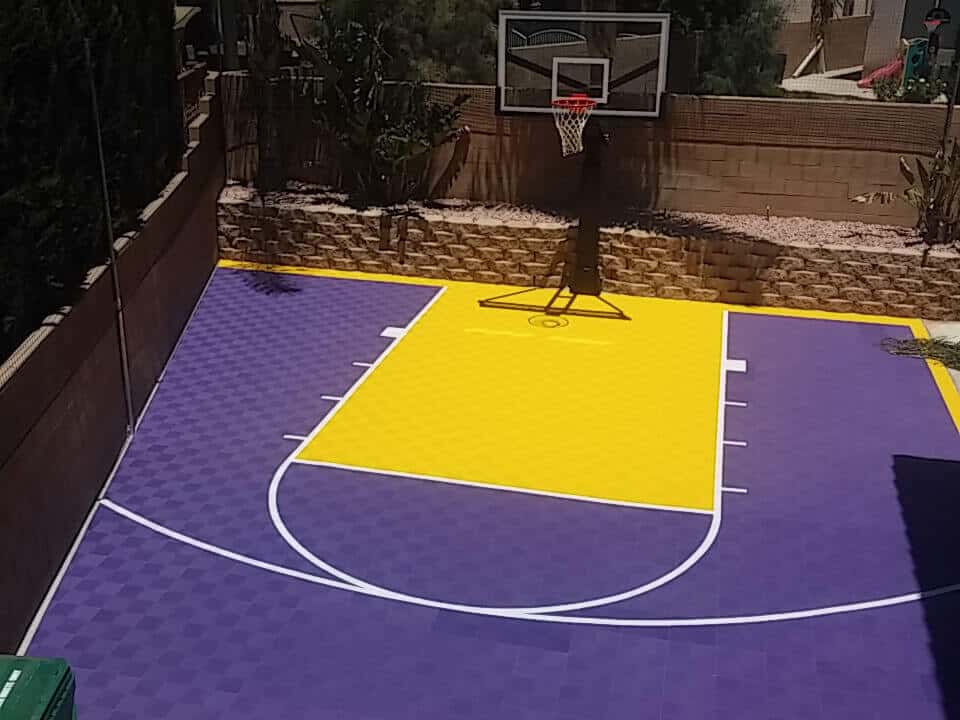 Designed by Nike designer Tinker Hatfield, the graphics were executed by United Services Inc., and General Manager Shane Matheson recalls when he was first flown in to Eugene, Ore., to meet with all the Oregon big names to see an initial design: Designed by Nike designer Tinker Hatfield, the graphics were executed by United Services Inc., and General Manager Shane Matheson recalls when he was first flown in to Eugene, Ore., to meet with all the Oregon big names to see an initial design: "On the wall they had hung a mockup for the floor. They said, 'This is our floor; can you do this?' I started to laugh. They said, 'What are you laughing about?' I said, 'It's completely doable, but it's going to cost a ton of money. Get a dump truck and back it up to the bank.'" Matheson says it took them about a month and a half to figure out how to execute the design—one unlike anything seen before. Almost two miles of stencil materials were used to create it. "It was a fantastic experience for us, because we learned we could do things people said were impossible. You either really love that floor or hate it, and that was their marketing strategy all along." |
More photos of this United Services project:
Praters Athletic Flooring
'We really pushed the limits of what paints and sealers can do with this one,' says Praters' Mark Frainie of the 2016 Women's ACC Championship court.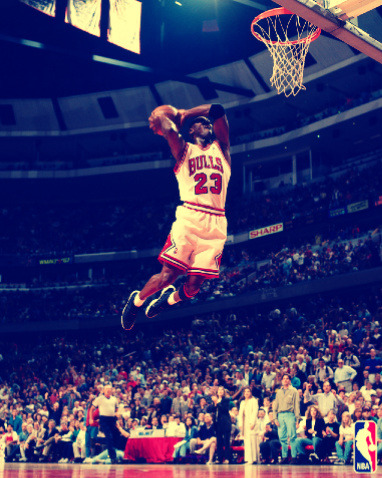
From its facility in Chattanooga, Tenn., Praters ships wild basketball floors all across the country. "Facilities don't get to sand their court down to bare wood very often. When they do, we encourage them to do something different, and we allow them to push the limits of court design by working with our design department. 'Whatever they want' is our attitude; let's make this particular facility a showplace," says President John Prater. "It doesn't matter whether it's the NCAA or a high school or the NBA, it's the same approach."
In the last couple years, the company has come to embrace the technique of using paint colors within their sealer coats, because the trend right now is for clients to want to see the grain of the floor. "That allows you to get any color of the rainbow, including colors that aren't traditional stain colors," Prater says. The technique also allows the company to match Pantone Matching System colors—a typical request for universities and schools particular about their branding—with the transparent look of a stain but without the need to use a traditional painted logo or other graphic.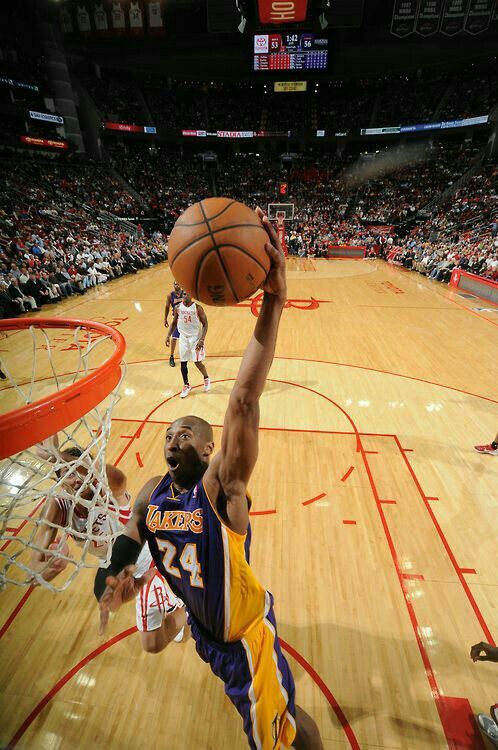 For earth tones, the company adds a concentrated dye in the sealer, and for other colors, paint is mixed with the sealer. "It gives us a lot more creative flexibility," Prater says.
For earth tones, the company adds a concentrated dye in the sealer, and for other colors, paint is mixed with the sealer. "It gives us a lot more creative flexibility," Prater says.
It does require more work in doing samples, however. Matching a PMS color with paint is straightforward since the paint is opaque. Matching a PMS color in a sealer requires lots of sampling and back and forth to get approval, since the color of the natural wood becomes a factor, and typically the colors used must be darker than the end color to compensate for the lightness of the maple.
There's a fallback when using pigments in sealers, too. "If it's absolutely horrible, I can always paint over it," Prater says. Because it doesn't penetrate the wood like a stain does, it tends to not bleed as much, and if the client ends up not liking it, you can "buzz it off with a sander real quick," he adds.
{rblink 2144}Either way, the technique is not a good one for a typical residential contractor to use since any areas with more or less finish show the color darker or lighter. It works on these types of jobs because there are no start or stop marks—the sealer application starts and stops on the masked area, or is simply pulled straight wall to wall.
It works on these types of jobs because there are no start or stop marks—the sealer application starts and stops on the masked area, or is simply pulled straight wall to wall.
No example of this technique shows it off better than the elaborate 2016 Women's ACC Championship court. The ACC had a good idea of what they wanted for their design; it features large geometric shapes, with blended blue, green and pink shades across the three-point areas, "as if they were painted by a giant artist's hand," says Praters Creative Director Mark Frainie. "We really pushed the limits of what paints and sealers can do with this one, as well as the techniques used for application," adding that when they first got the design concept, they weren't sure how they would achieve it.
The initial process for the new portable floor was typical: It was assembled in Praters' facility and sanded, then coated with two coats of sealer. Then three-point lines were striped, and three colors of pigmented sealer were applied using an 18-inch T-bar with a nylon foam pad.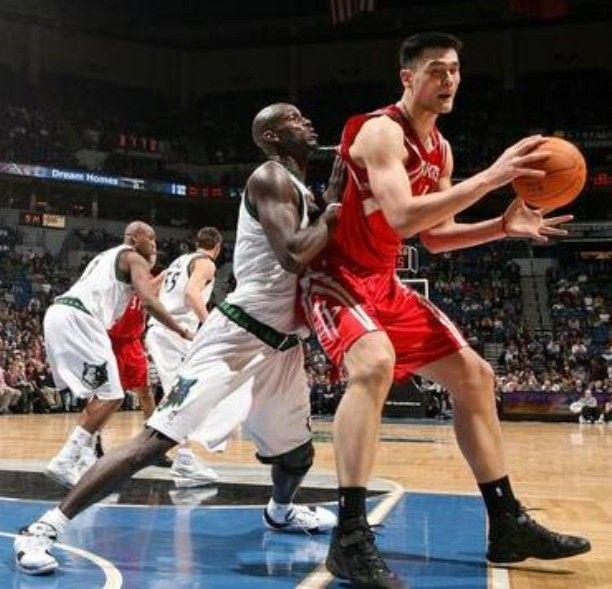 During application, the T-bar was treated "as if it were a huge paintbrush," and all the color was applied at one time—so there was only one shot to get the colors right. And it had to be done quickly to keep the product workable. It was not for the faint of heart, says Prater. After the pigmenting, the logos and lettering were applied, buffed and the final coat(s) were applied. "At the end of the day, the floor looked just like the picture—which is always nice!" Prater says.
During application, the T-bar was treated "as if it were a huge paintbrush," and all the color was applied at one time—so there was only one shot to get the colors right. And it had to be done quickly to keep the product workable. It was not for the faint of heart, says Prater. After the pigmenting, the logos and lettering were applied, buffed and the final coat(s) were applied. "At the end of the day, the floor looked just like the picture—which is always nice!" Prater says.
Tips: • Make sure everything you need is available on site, from tools to applicators. • Creating samples for customer approval is critical. • Experiment with new techniques on panels at your shop until you can get them down correctly. • Having a support team, from the office to on the floor, is critical to be able to pull off complicated designs. |
Training: For those interested in learning how to pull off complex basketball court designs, Praters doesn't keep its techniques a secret.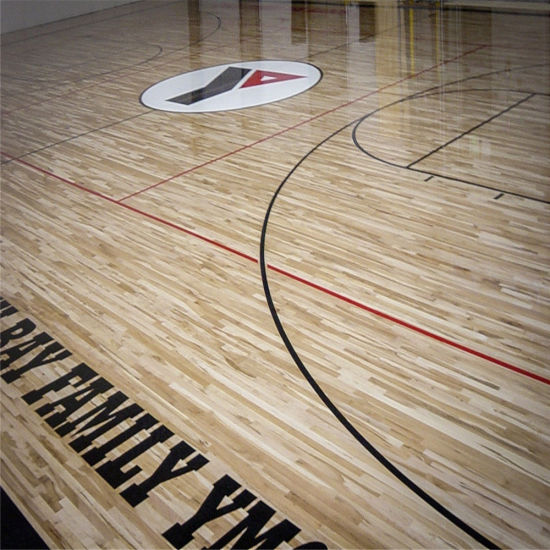 In fact, its cool "The Edgegrain" blog on the company's website at pratersflooring.com has a series of "How it's Done" and "Tips & Tricks" videos showing how they do different techniques for their court designs. The company is also willing to act as a consultant. "We are partnering with more and more contractors around the country who are maybe hesitant to do a more complicated job. We provide anything from turnkey—we'll sand it and seal it and do the graphic application—to talking them through the design on the phone or sending one person out to the job to work on a project," John Prater says. In fact, its cool "The Edgegrain" blog on the company's website at pratersflooring.com has a series of "How it's Done" and "Tips & Tricks" videos showing how they do different techniques for their court designs. The company is also willing to act as a consultant. "We are partnering with more and more contractors around the country who are maybe hesitant to do a more complicated job. We provide anything from turnkey—we'll sand it and seal it and do the graphic application—to talking them through the design on the phone or sending one person out to the job to work on a project," John Prater says. |
Recent Creative Projects Ball Up Streetball:
"This is one of the most challenging designs we have worked on. The main court features five shades of gray and is designed to mimic the pattern on a heather-gray T-shirt. Coming up with a process to create this look consistently over the entire court took months to figure out and weeks to execute," says Praters Creative Director Mark Frainie. Abby Mitchell Texas Christian University: Praters worked with Ponder Company Inc. in Dallas to create this volleyball court. It and a matching basketball court are both based on TCU's frog-skin patterned uniforms. "There is so much detail that the task proved to be very labor-intensive and time-consuming," Frainie says. "The Ponder Company was able to allocate a tremendous amount of resources to this task, led by some really great and talented guys, to make quick work of it." Don Jedlovec, Santa Clara Athletics Santa Clara University:
Designed by Tinker Hatfield, the Nike designer who also created the University of Oregon court, the floor features the university's architecture. Praters coordinated with San Carlos, Calif.-based H.Y. Floor & Gameline Painting Inc. on the floor, employing paint in sealer coats for the architectural design. "The flooring professionals at H.Y. Floor made the process of installing the stencil and applying the various colors for the mission a breeze," Frainie says. |
More photos from these Praters projects:
Sportstech Flooring
'You've just got to know what you're doing and be confident in what you're doing ... We've made mistakes; everybody does. It's part of the learning process,' says Andrew Ledford, project manager at Sportstech Flooring.
Complicated staining and dying jobs along with big graphics aren't just for NCAA and NBA floors. The trend has reached down to pre-collegiate levels, too, and companies like Sportstech Flooring in Tulsa, Okla., make their living specializing in gym floors in their region, handling all the design work, artwork and printing of stencils in-house. At Sportstech, "we probably do about 150 screen and coats per year and probably have 12 new floors going in this year," says Outside Salesperson Kathryn Gould.
The floor at Nathan Hale High School in Tulsa, Okla., (shown above) is a great example of how even high schools are taking a more modern approach with their basketball floors.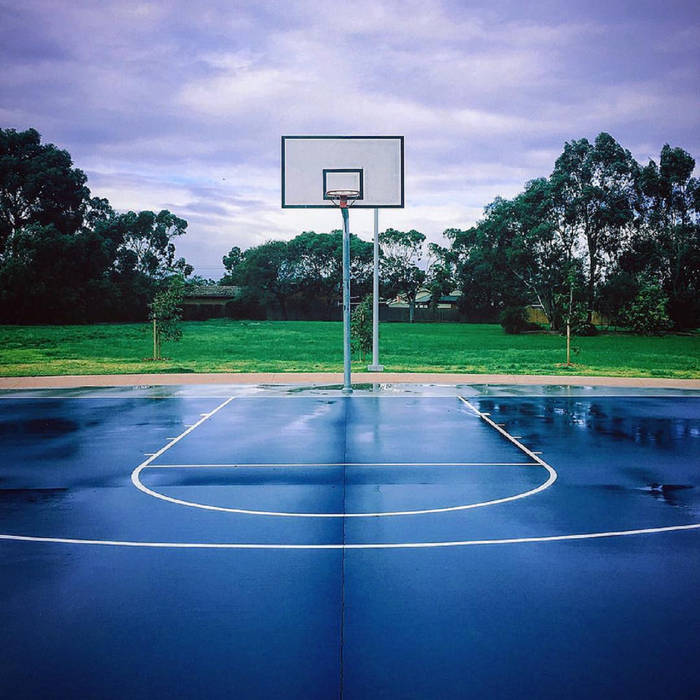 The fixed maple floor was sanded and screened, and tape was laid down for the lines for the lanes and three-point arc. The lanes and basketball circles were premasked to leave only the three-point arc exposed. A white stain was mixed with sealer and applied to the three-point arc with a T-bar. After at least four hours of dry time, they peeled up the premasks in the key and premasked everything around the basketball circles, then coated those with sealer with a brown tint. The next day they peeled everything up, ran a maroon pad over all of it to knock down the grain and sealed the entire floor with two coats of sealer without any color.
The fixed maple floor was sanded and screened, and tape was laid down for the lines for the lanes and three-point arc. The lanes and basketball circles were premasked to leave only the three-point arc exposed. A white stain was mixed with sealer and applied to the three-point arc with a T-bar. After at least four hours of dry time, they peeled up the premasks in the key and premasked everything around the basketball circles, then coated those with sealer with a brown tint. The next day they peeled everything up, ran a maroon pad over all of it to knock down the grain and sealed the entire floor with two coats of sealer without any color.
Once the seal coats were dry, the floor was screened because "paint has to have something to stick to," says Sportstech Project Manager Andrew Ledford. This logo was relatively easy, he says, because it was only white and gray. "Whenever we do a stencil, painting the outline is first, and then we just work different colors one at a time," he explains. So the white was painted, and, once dry, the areas were cut out for the gray paint. Each color had at least two coats of paint. "After it's all set, you pull all the premask up and you have a single logo," Ledford says.
So the white was painted, and, once dry, the areas were cut out for the gray paint. Each color had at least two coats of paint. "After it's all set, you pull all the premask up and you have a single logo," Ledford says.
"If you don't do it a lot, it's easy to get lost in a logo," Ledford says. "You might pull the wrong color. If you're using paint, it's easier, because you can repaint with the right color. If it's stain, you're done for and you have to resand." Once the logo and lines were painted, the entire floor was abraded and the topcoats are applied for a completed floor.
Ledford says he is happy to see the trend toward using stains and tints that show the grain in the wood. "A while ago, every customer thought the more paint they had on the floor, the better it looked," he says. "But paint just sits on top, and you have to worry about scuff marks."
Tips: • Follow directions about how much color you can add to the sealer to avoid peeling. • Sealer coats with color must be applied carefully but fast enough that they don't start to set up and tear. • Be prepared to do multiple coats of paint, particularly for some colors. |
The Sports Authority When it comes to maple sports flooring, the Maple Flooring Manufacturers Association Inc. is the authority. Formed in 1897, the MFMA publishes northern hard maple/beech/birch grade standards and floor care recommendations, and its PUR Standards use ASTM standards to define acceptability for shock absorption, vertical deflection, area of deflection, ball bounce and, for finishes, surface friction. Complete info on MFMA can be found at maplefloor.org. |
See the Basketball Courts of the Top 12 Seeded Teams in March Madness
March 16, 2022
How Do They Change Basketball Floors?
How do they change basketball floors?
The NBA’s main suppliers of court floors are Horner, Robbins and Connor Sports Flooring. It is required that an NBA court is changed every 10 years, although teams can apply for year on year extensions after inspection. Some lasting as long as 20 years!
It is required that an NBA court is changed every 10 years, although teams can apply for year on year extensions after inspection. Some lasting as long as 20 years!
Similarly, how do arenas change basketball floors? To convert the rink to the court, the walls and glass panels are removed, then special insulated plywood is laid out over the entire ice surface and the hardwood of the basketball floor is pieced together atop the plywood. This special plywood manages to keep the basketball court warm and the ice cool at the same time.
In this regard, how do they change the logos on a basketball court? The stencils are carefully adhered to the gym floor and have layers, so when one paint area is dry, a section can be removed and another area painted. … “We put the base paint layers down, pull the vinyl up, then take transfer paper—what they use on top of vinyl—and put that on top of it and cut it,” Matheson explains.
Beside the above, how do stadiums change floors? When it comes time to switch to basketball, workers lay interlocking mats made from rubber or a fiberglass-foam composite over the ice.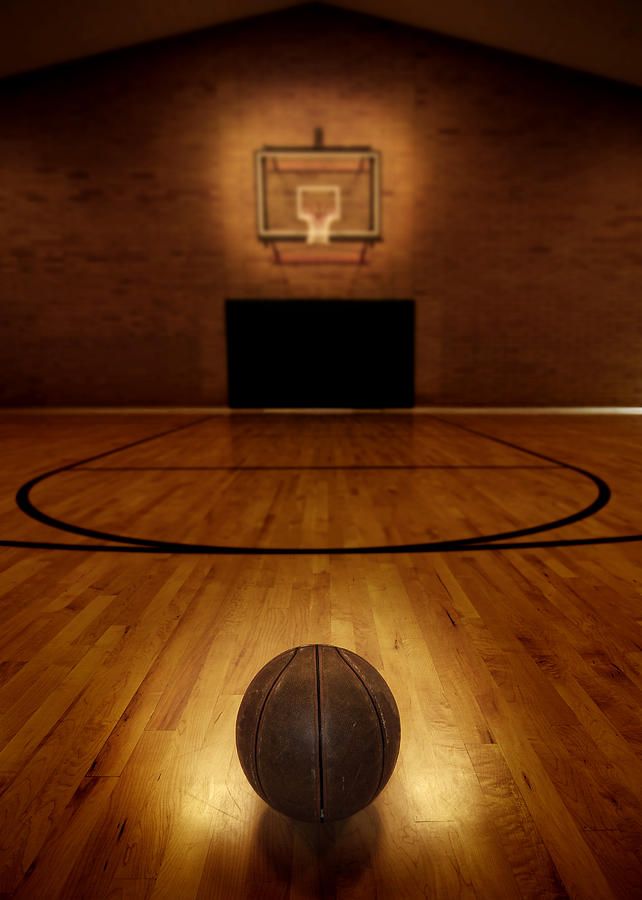 (Photos below from Boston’s TD Garden.) On top of that they lay deck boards topped with basketball-ready parquet.
(Photos below from Boston’s TD Garden.) On top of that they lay deck boards topped with basketball-ready parquet.
Also know, how is a basketball floor made? Basketball court surfaces can be made of hardwood (sports parquet), cushioned or acrylic flooring, rubber flooring (Sbr ,epdm granules) can be used to make basketball court surfaces soft and to prevent injuiries. The lines of the basketball court surfaces must be made from acrylic painting.
Contents
- How much does an NBA floor cost?
- How does a Zamboni work?
- How thick is NHL ice?
- What happens to hockey ice?
- Are NBA floors painted?
- What do they use on basketball floors?
- What kind of paint is used on basketball courts?
- How long does it take to put down a basketball court?
- How long does it take to put ice in an arena?
- Are NBA Courts real wood?
How much does an NBA floor cost?
It takes three weeks to manufacture an NBA court, with the market price currently sitting between $120,000 and $130,000 including freight cost.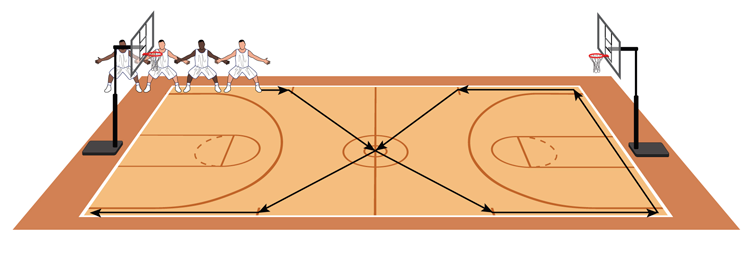 Eventually, the NBA opted to “borrow” many of the floors in order to save money and time.
Eventually, the NBA opted to “borrow” many of the floors in order to save money and time.
How does a Zamboni work?
The Zamboni is a mechanical ice resurfacer. It works by scraping the ice surface and collecting the snow (which is later discarded). Next, it “cleans” the ice, by putting down water which flushes the grooves deep in the ice, loosening any dirt or debris. The excess water and dirt is then collected.
How thick is NHL ice?
The jersey is sometimes called a sweater because, during hockey’s early years, players actually wore sweaters and not the mesh-like jerseys of today. How thick is the ice? Ice is approximately 3/4″ of an inch thick and is usually chilled at 16 degrees fahrenheit. The thicker the ice, the softer and slower it becomes.
What happens to hockey ice?
The ice in an ice hockey rink is only removed when the regular season and playoffs are finished. When it’s time to get rid of the ice, the brinewater is warmed and circulated under the ice to begin the melting process.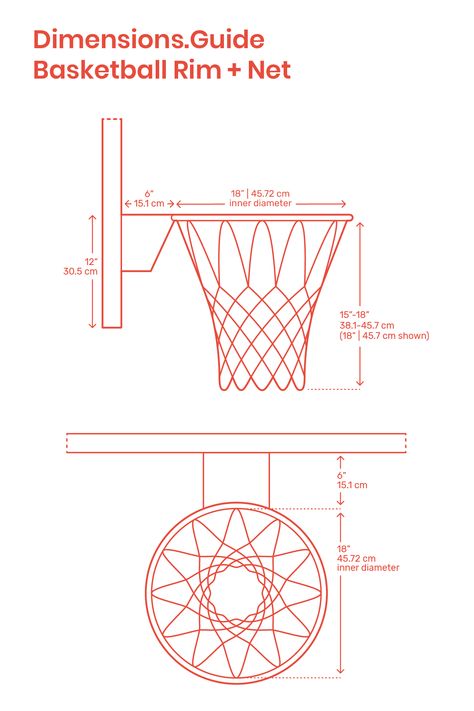 Once the ice has melted sufficiently, it is then broken up and carted off by front end loaders.
Once the ice has melted sufficiently, it is then broken up and carted off by front end loaders.
Are NBA floors painted?
Below that oil- or water-based final finish, which is reapplied every off-season, as per NBA rules, also comes plenty of paint, with center-court logos averaging 300 square feet in the NBA and city names or nicknames adorning the baselines, along with arena names, the NBA logo and secondary logos.
What do they use on basketball floors?
Today’s professional basketball courts vary widely in their design, subflooring systems and staining, but two things are (almost) always the same: the hardwood used to make them and the polyurethane used as a finish.
What kind of paint is used on basketball courts?
You must use an outdoor concrete paint, as paint does not stick to concrete unless it’s a special type. Other paints may also be slippy, which could cause injury to players or children using the court. There are many different brands of concrete basketball court paint that you can pick from.![]()
How long does it take to put down a basketball court?
The transformation time can take anywhere from 90 minutes to an entire day. Check out the process in a super high-speed video that shows the entire process.
How long does it take to put ice in an arena?
The entire process can take almost 48 hours. The ice is only about one inch thick when everything is finished. In addition, the official size of a National Hockey League rink is 200 feet long and 85 feet wide.
Are NBA Courts real wood?
What kind of wood is used? The standard NBA floor is made from acer saccharum, also known as hard maple. This specific variety is harder than most hardwoods and lighter in color. To turn these trees into a playable surface, the NBA employs three companies, Horner, Robbins, and Connor Sports Flooring.
Covering for a basketball court in Moscow and the region.
Contents:
- Basketball court flooring.
- What you need for the site.
![]()
- What is a rubber floor.
- Basketball court cover.
- Useful information:
Basketball is an exciting game that is familiar to everyone since childhood. To experience the full pleasure of it, you should equip a special platform. And it's not just about the equipment, without which basketball is impossible. It is equally important to make sure that there is a very comfortable floor in such an area. After all, it depends on how easy it will be for the players to move around the court. It is also important to prevent possible injury. Still, vigorous activity, as happens in the process of basketball, is associated with the risk of falls and injury. So you should especially think about how to equip the territory so that it is both comfortable and safe. However, there is already a material with which it is easiest to complete such a task. This is a rubber flooring for a basketball court. It combines budget cost with a lot of practical advantages.
What you need for the site.

First of all, it is worth finding out how the territory where they plan to play basketball is being arranged. After all, even if people love this game, they are not particularly interested in the technical parameters of the site, which has all the conditions for this type of physical activity. But there are specific requirements, approved officially. They should be followed so that you can play basketball according to all the rules.
First of all, you will have to choose a plot that is suitable in size. Since a full-fledged basketball court is not at all small. The length of such a sports facility can reach 28.6 m. Moreover, the territory will have to be looked for such that the surface is relatively flat. Of course, the floor can be leveled, but this means high costs. Moreover, on a relatively uneven base, but without significant height differences, you can immediately lay a rubber basketball court cover.
As for the size of the plot, it can be a little smaller. For example, a territory with parameters of 25.6 by 15.24 meters is usually allocated near schools. By the way, you can make a semi-platform. In this case, both numbers should be divided by two to get the correct ratio between length and width.
For example, a territory with parameters of 25.6 by 15.24 meters is usually allocated near schools. By the way, you can make a semi-platform. In this case, both numbers should be divided by two to get the correct ratio between length and width.
In addition to creating a comfortable floor, you should buy special equipment. But it needs very little. Indeed, for the game it is enough to have two basketball hoops, which are traditionally fixed on a high pole. By the way, if the territory allows you to equip only a semi-site, one ring will be enough.
What is a rubber floor.
Today, rubber flooring can be found in many street areas. Including, they are used to create comfortable sports grounds. However, not all the inhabitants understand what are the advantages of such floors. And they seem to be specially made for sports: they combine all the features that are important for ensuring comfort and safety during training.
The main quality to be aware of is that these coatings are soft to the touch. The secret lies in their special composition and structure. Rubber granules are used in production. Recall that rubber itself has a cushioning effect. To get a rubber coating for a basketball court, polyurethane glue is added to the rubber crumb. And this substance binds individual particles, but without changing their qualities. As a result, the floor is springy. And this quality is indispensable in sports. Because on a rubber coating it is impossible to get injured by falling on it through negligence. It is also comfortable to run and jump on it. Moreover, the depreciation effect prevents the harmful effects on the human joints from hitting the foot on the floor.
The secret lies in their special composition and structure. Rubber granules are used in production. Recall that rubber itself has a cushioning effect. To get a rubber coating for a basketball court, polyurethane glue is added to the rubber crumb. And this substance binds individual particles, but without changing their qualities. As a result, the floor is springy. And this quality is indispensable in sports. Because on a rubber coating it is impossible to get injured by falling on it through negligence. It is also comfortable to run and jump on it. Moreover, the depreciation effect prevents the harmful effects on the human joints from hitting the foot on the floor.
Safety and health are not the only qualities of a rubber-based floor that are important in sports. Even the coatings are perfectly even. So it is impossible to catch on the territory and fall. Simplified cleaning. Throughout the year, the site remains clean and beautiful. By the way, the floors are waterproof. As a result, they dry out very quickly after precipitation.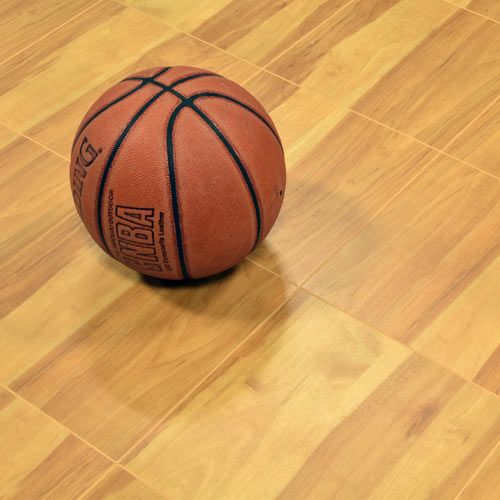
Basketball court cover.
If you want to equip the area where you could play this exciting game, you can choose different types of floor coverings. And first of all, it is worth paying attention to the variety of choices according to the installation method. For example, it is possible to buy ready-made rubber slabs or rolls. They fit quickly and easily. True, it is worth emphasizing separately that with this method of installation, it should be ensured that there are practically no gaps on the floor. Since sand and debris will clog in them, contributing to premature wear of the coating. And there is also a risk that the athlete's foot will catch on the gap. Seamless installation eliminates such possibilities. By the name of the method, it is clear that this installation involves filling the territory when there is not a single gap on it.
ISTIMPEKS is ready to create sports grounds for various sports. We employ professional installers, and the cost of services is within reason.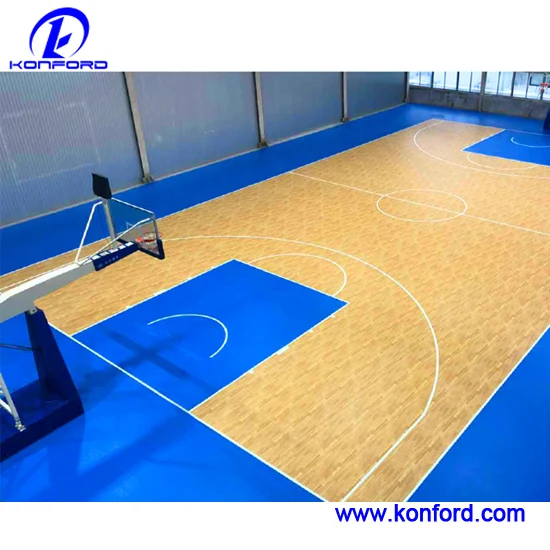
Physical culture test basketball answers
Physical culture tests on the topic: "Basketball"
The correct answer is marked with +
1. When was the International Basketball Federation (FIBA) established?
-1904
-1928
+1932
-1947
2. Who invented basketball as a game?
+James Naismith
- Pierre de Coubertin
-Holger Nielsen
-William J. Morgan
3. In which country was basketball invented?
-England
- Brazil
- Spain
+ USA
4. How does the basketball game start?
-Throw-in from endline
-Throw-in from the touchline opposite the free-throw line
- Throw-in from the middle of the touchline
+ Jump ball in the center circle
5. What does the word "basketball" mean?
- "Basque (resident of the Basque lands in Spain) + ball"
- "Bucks (dollar) + ball"
- "Bass (male voice) + ball"
+ "Basket + ball"
6.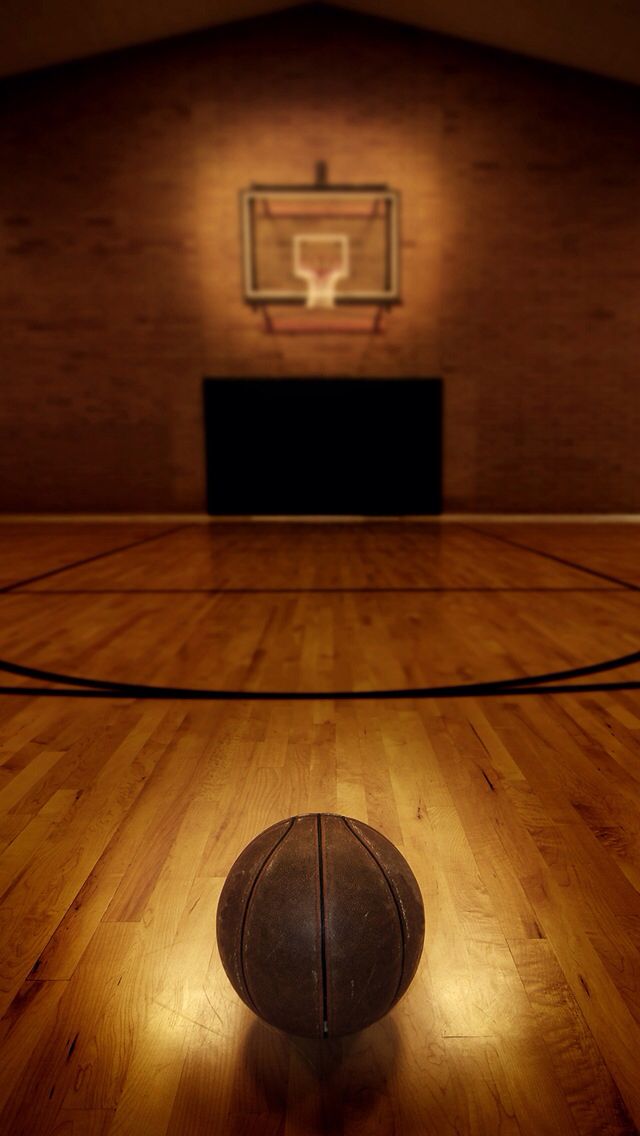 What are the dimensions of the basketball court?
What are the dimensions of the basketball court?
-18×9m
-23.77×10.97m
+28×15m
-40×20m
7. In what year did basketball appear?
-1846
-1890
+1891
-1895
8. What is the minimum ceiling height above the basketball court?
-5m
-6m
+7m
-8m
9. What shield colors are allowed?
- White and black
+ White and transparent
- Yellow and transparent
- White and yellow
test 10. What line color is allowed to be used when marking an opaque shield?
-White
+ Black
-yellow
-Orange
11. What line color is allowed to be used when marking a transparent shield?
-Black
+White
-yellow
-Orange
12. How many referees should be on the court during a match?
How many referees should be on the court during a match?
-1
+2
-3
-4
13. How many referees should work at the referee table?
-2
+3
-4
-5
14. If the injured player is not replaced, but provided with medical assistance, then:
- a personal foul is charged against him
+his team is credited for using a 1-minute break
- 1 point is recorded for the opposing team
- the opposing team is entitled to 1 free throw.
15. Who instead of an injured player gets the right to take free throws?
- Any partner of the injured person.
- Team captain.
+ The player who replaced the injured player.
- Free throws are replaced by a throw-in from the touchline.
16. How many 10-minute periods does a match consist of?
-2
-3
+4
-6
17. How to classify a ball hitting any part of the referee's body?
How to classify a ball hitting any part of the referee's body?
- The ball went over the touch line.
- The ball goes over the end line.
- Drop ball.
+Like hitting the ball on the floor in the place where the referee is standing.
18. What decision should the referee make if the ball is stuck on the support of the hoop?
+ dropped ball.
- Throw-in of the team whose player last touched the ball.
- Throw-in of the team on whose backboard the ball is stuck.
- Throw-in of the team for which the backboard with the stuck ball is someone else's.
19. What price of a thrown ball does not exist?
-1 point
-2 points
-3 points
+4 points.
test-20. What decision should the referee make if a player inadvertently throws the ball into his basket?
+Gives points to the opponent.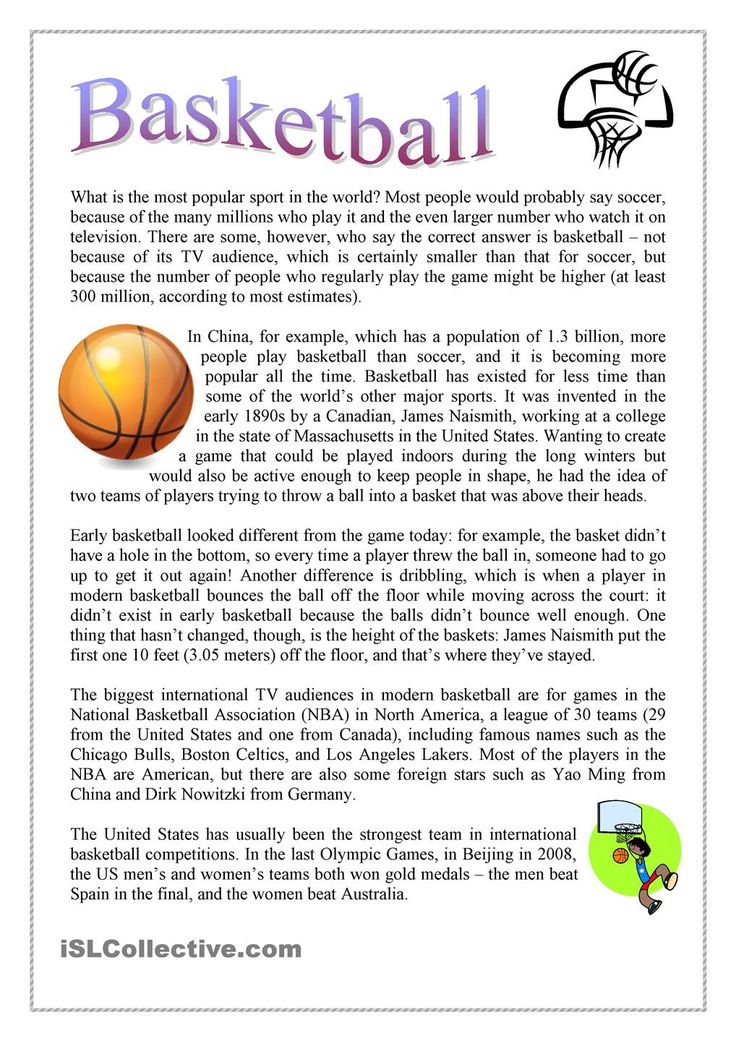
- Appoint a disputed one.
- Assigns a throw-in in favor of the opponent.
- Gives a free throw to the opponent.
21. What is the maximum total number of requested 1-minute breaks allowed per team in four 10-minute periods?
-4
+5
-6
-8
22. What score is fixed in a match when one team loses by forfeiture (forfeit defeat)?
-1:0
-10:0
-15:0
+20:0
23. What is the minimum number of players in one team that is allowed to continue the game?
-1
+2
-3
-4
24. What score is fixed in a match if it is stopped due to a lack of players for the winning team?
- Remains the same as when the game was stopped.
- Defeat of a team with a "lack of players" 0:1.
+ Defeat of a team with a "lack of players" 0:2.
- Defeat of the team with a "lack of players" 0:20.
25. What score is fixed in a match if it is stopped due to a lack of players for the losing team?
+Remains the same as when the game was stopped.
- Defeat of a team with a "lack of players" 0:1.
- Defeat of a team with a "lack of players" 0:2.
- Defeat of the team with "lack of players" 0:20.
26. What decision should the referee make if the ball touches the back of the backboard?
- Assign a free throw to the basket of the team whose player the ball touched in the opposite direction of the backboard.
+Call a throw-in against the team from whose player the ball touched the back of the backboard.
- Call a throw-in against the team whose backboard was hit by the ball.
- Designate a dropped ball.
27. What decision should the referee make if a player of the defending team interferes with the ball (touches the backboard or basket with his hand) after an opponent has taken a throw?
-Award a foul to the offending player and a throw-in to the offending team.
- Award free throws to the injured team.
-Award a foul to the offending player and award free throws to the offending team.
+Count the ball hitting the hoop.
28. Which foot is considered to be the pivot foot if the player catches the ball by touching the floor with both feet?
- The leg that is closer to the ball.
- The leg that is more flexed.
- Leg that is more straight.
+ Any leg.
29. Which action of a player with the ball in his hands is not a violation?
- Slip.
- Rolling.
- Trying to get up.
+Dribble after landing on both feet.
test_30. With what gesture does the referee demonstrate a successful three-point shot?
-Three fingers of one hand.
- Two fingers of one hand + one finger of the second hand
+ Three fingers of one hand + three fingers of the other hand
- Two fingers of one hand + two fingers of the other hand.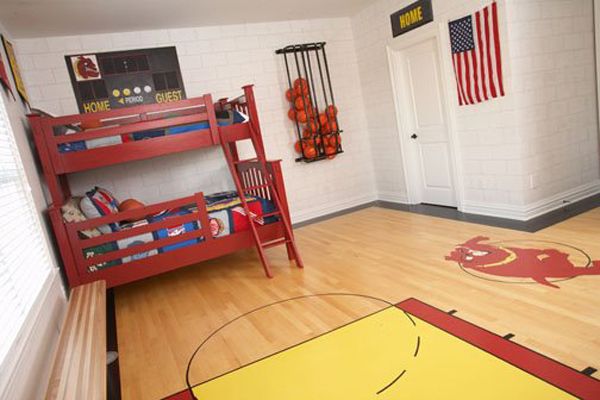
31. Which term (definition) does not exist?
- Dead ball.
- Live ball.
+Out of play.
- Free throw.
32. What time limit does not apply?
-3 seconds
-5 seconds
-8 seconds.
+10 seconds.
33. What is the time limit for a team to move the ball from the backcourt to the frontcourt?
-3 seconds
-5 seconds
+8 seconds
-24 seconds
34. How many free throws are not awarded in one series?
-1
-2
-3
+4
35. What should the referee call for a double foul?
- Free throws to the baskets of both teams + fouls to the players of both teams.
+ Drop ball + fouls to players of both teams.
- Drop ball.
- Free throws to the baskets of both teams.
36.